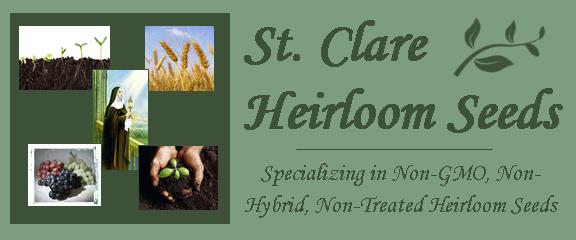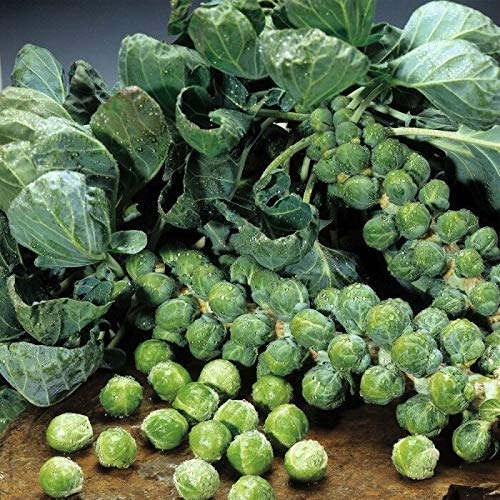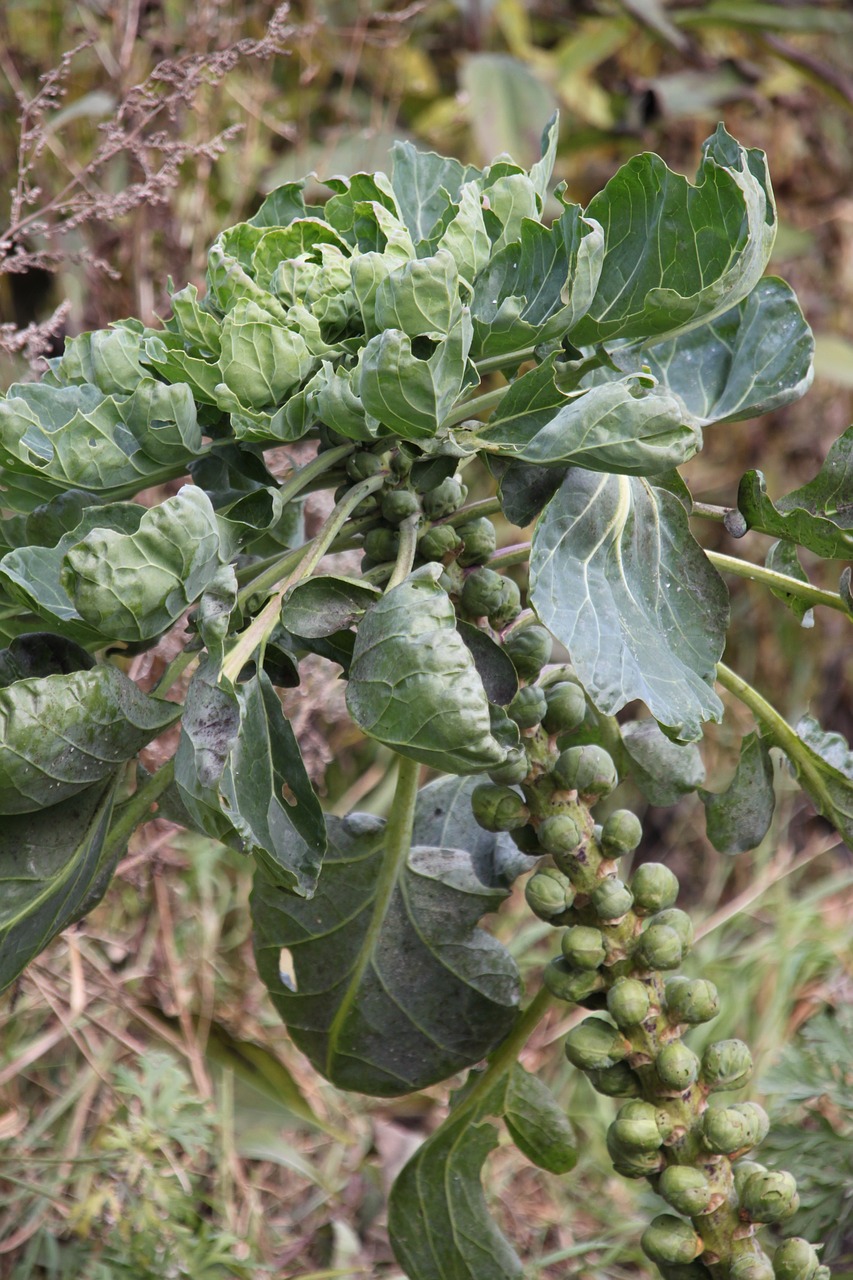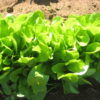Description
Catskill Brussels Sprouts
50 Seeds per pack
Days to Maturity: 85–110 Days
Sun Requirements: Full Sun
Botanical Name: (Brassica oleracea)
First introduced in 1941 by Arthur White of New York, Catskill Brussels Sprouts quickly gained popularity for their productive yields and cold-season reliability. Bred specifically for high production and flavor, they’ve remained a heirloom favorite ever since. These cool-weather lovers thrive in full sun and are well-suited to northern climates or autumn harvests, growing compactly to 20–24″ tall.
Strong, thick stalks bear numerous large, tight, deep green sprouts measuring 1.5 to 2 inches across, growing directly along the length of the stalk to create a compact, space-efficient structure. Their uniform shape and rich coloring make them attractive both in the garden and on the plate. The flavor is rich, nutty and mild, developing added sweetness after a light frost, making them especially well-suited for cool season harvests toward the end of the growing season.
Ideal for roasting, steaming, or sautéing, these sprouts also excellent in the freezer—retaining both texture and flavor for extended storage. Packed with vitamins A, C, and K, along with folate, they’re both a delicious and healthy addition to the fall table and winter table!
Planting Instructions for Catskill Brussels Sprouts Seeds
When to Plant:
Start Catskill seeds indoors 4–6 weeks before your last expected frost date for a fall harvest, typically between February and May depending on your region. In northern zones, indoor starting is essential. In warmer areas, you may direct-sow in midsummer for a winter crop.
How to Start Indoors:
Sow Catskill seeds ¼–½″ deep in modular seed trays filled with a sterile, peat-free seed-starting mix. Place two seeds per module. Keep trays in a bright area or under grow lights. Maintain consistent moisture without waterlogging. Thin to one seedling per cell after germination. Begin feeding with diluted organic fertilizer once the first true leaves appear, gradually increasing to twice a week. Harden off seedlings over 7–10 days before transplanting by gradually introducing them to sunlight and outdoor conditions.
Transplanting to the Garden:
Transplant Catskill seedlings after last frost and when they are 4–6″ tall and well-rooted, spacing plants 18–24″ apart in rows 24–36″ apart. Choose a sunny, sheltered spot with fertile, firm, well-drained soil. If your soil is acidic, apply lime in advance to raise pH to at least 6.5. Enrich the planting area with aged compost or manure and a low-nitrogen, high-phosphorus fertilizer. Set plants slightly deeper than they grew in their containers and water in well.
Direct Sowing Outdoors:
If direct sowing, plant ¼–½″ deep, dropping 2–3 seeds every 18″, thinning to the strongest seedling once sprouted. Keep soil evenly moist. Use row cover to protect young plants from pests and wind, especially in early spring or midsummer heat.
Growing Tips:
Maintain even soil moisture throughout the season—about 1″ per week—especially in dry periods. Apply mulch to conserve moisture and help suppress weeds. Side-dress with compost or balanced fertilizer when plants reach 6″ tall and again midseason. Stake plants to prevent lodging. In early fall (about a month before harvest), cut off the top inch or two of the main stem to stop upward growth. This helps all the sprouts on the stalk ripen at the same time.
Pests and Protection:
Common pests include cabbage worms, aphids, slugs, and root maggots. Use floating row covers to keep insects off young plants. You can handpick pests, spray aphids off with water, or use organic insecticidal soap or neem oil if needed. Slugs can be trapped or deterred with diatomaceous earth, beer traps, and copper strips. Always use food-grade diatomaceous earth, and keep beer traps out of reach of animals to prevent accidental drinking. To reduce root maggot risk, use collars around stems and avoid planting in the same spot for four years. For diseases like clubroot, rotate crops, lime acidic soil to raise pH, and remove infected plants immediately.
Harvesting:
Begin harvesting after the first fall frost, which improves flavor. Sprouts mature from the bottom up and should be 1–2″ in diameter and tightly closed. Harvest by twisting or cutting off individual sprouts, or cut the entire stalk when most sprouts are ready. As you harvest sprouts, pull off any yellowing leaves from the lower part of the plant to keep it tidy and healthy. Catskill sprouts can be stored in the refrigerator or root cellar, or blanched and frozen for long term storage.
Container Growing:
Use large containers (minimum 12″ wide and deep) filled with compost-rich potting soil. Water regularly, and ensure strong support for the tall, top-heavy plants.
Saving Seeds:
To save seeds from Catskill Brussels sprouts, allow a few healthy plants to overwinter and bolt (flower) in their second year. These plants will produce yellow flowers followed by seed pods. Let the pods dry on the plant, then harvest and crush them to collect the seeds. Clean and store seeds in a cool, dry, and dark place. Be sure to isolate from other brassicas to prevent cross-pollination. We offer seed saving envelopes for storing your homegrown seeds!
FAQ:
What is the historical or notable background of Catskill Brussels Sprouts?
Catskill Brussels Sprouts were introduced in 1941 by Arthur White of New York and quickly became a favorite for their high yields and cold-season performance, remaining a cherished heirloom variety to this day.
How would you describe the flavor of Catskill Brussels Sprouts?
They offer a rich, nutty, and mild flavor that sweetens after a light frost, making them great for late season dishes.
What does Catskill Brussels Sprouts look like, and what are its growing habits?
Catskill grows compactly to 20–24 inches with thick, sturdy stalks bearing large, deep green, uniform sprouts spaced along the stem, making them great for gardens with limited space.
How and when do I harvest Catskill Brussels Sprouts?
Begin harvesting after the first fall frost for peak flavor; twist or cut 1–2 inch sprouts from the bottom up, or harvest the full stalk once most sprouts are mature.
When is the best time to plant Catskill Brussels Sprouts?
Start seeds indoors 4–6 weeks before the last frost for fall harvests, or direct-sow in midsummer in warmer zones for a winter crop.
What are the common culinary uses for Catskill Brussels Sprouts?
They’re excellent roasted, sautéed, or steamed, and hold their flavor and texture well when frozen—perfect for fall and winter cooking!
What’s the best way to store Catskill Brussels Sprouts after harvest?
Store them in the refrigerator or root cellar, or blanch and freeze them for extended use while maintaining quality.
What nutrients do Catskill Brussels Sprouts provide?
They are rich in vitamins A, C, and K, as well as folate, making them a nutritious addition to fall and winter meals.
Do Catskill Brussels Sprouts have any notable pest or disease resistance?
While not perfectly immune, they resist issues with proper care—use crop rotation, row covers, and soil pH adjustment to mitigate clubroot, root maggots, and common pests.



















Holli M. (verified owner) –
Your instructions, packaging and overall positive experience was wonderful! Keep doing the amazing work you do for the Lord and our country! God Bless!
David Kvamme (verified owner) –
Excellent seeds
Gloria A. (verified owner) –
Looking forward to planting to see the results
Tim Day (verified owner) –
Great deal!
Juli M. (verified owner) –
Love this variety! Easy to grow and hardy.
James K. (verified owner) –
Lovely
Mary F. (verified owner) –
Seem to be healthy and growing every day. Waiting for some stalks
Jennifer Thomason (verified owner) –
5 star!
George Nauyoks (verified owner) –
planted but haven’t germinated just yet will advize
Anonymous (verified owner) –